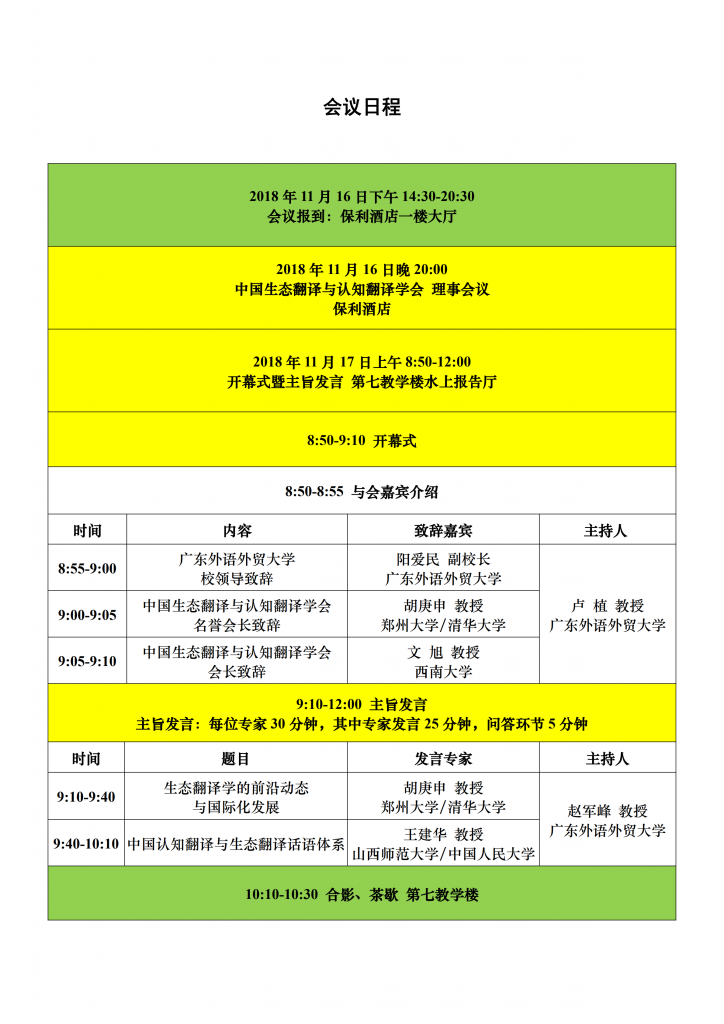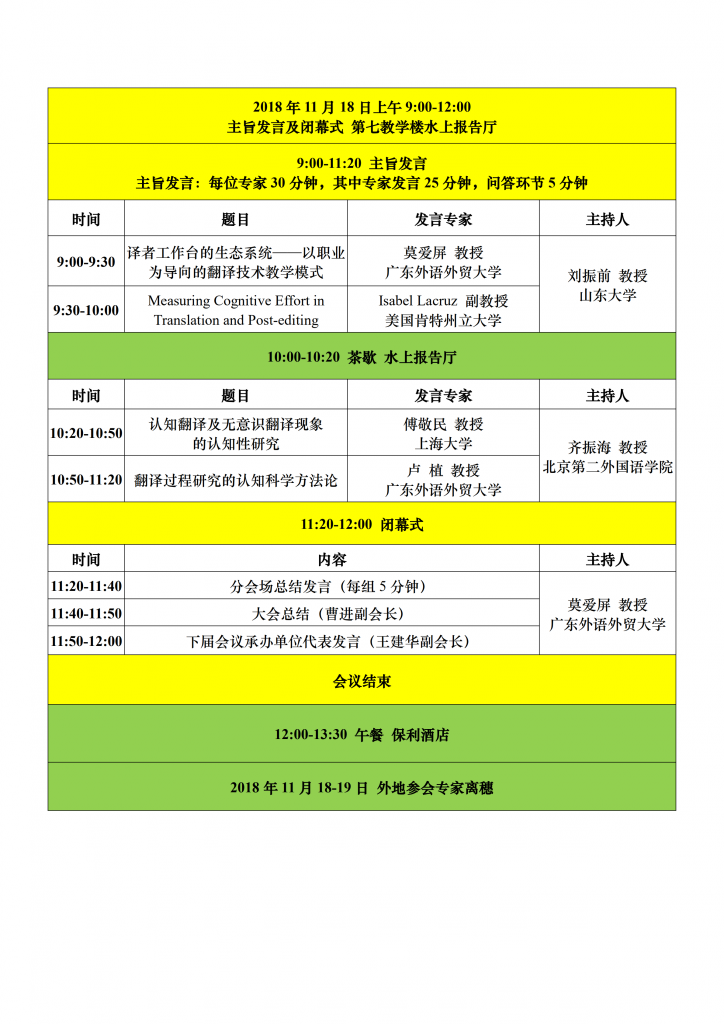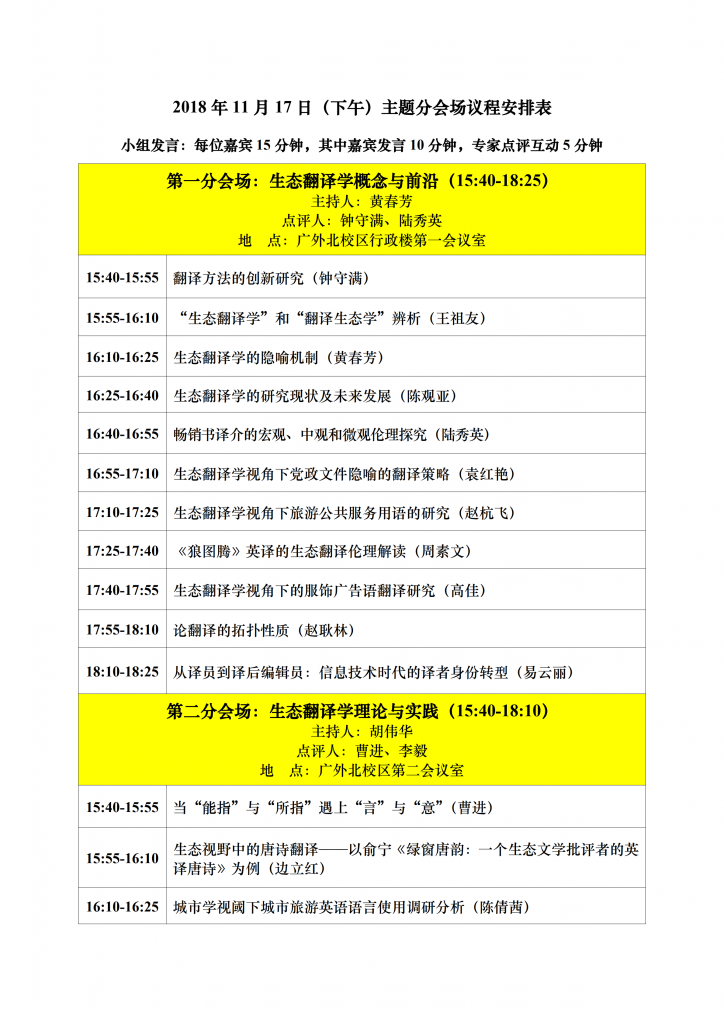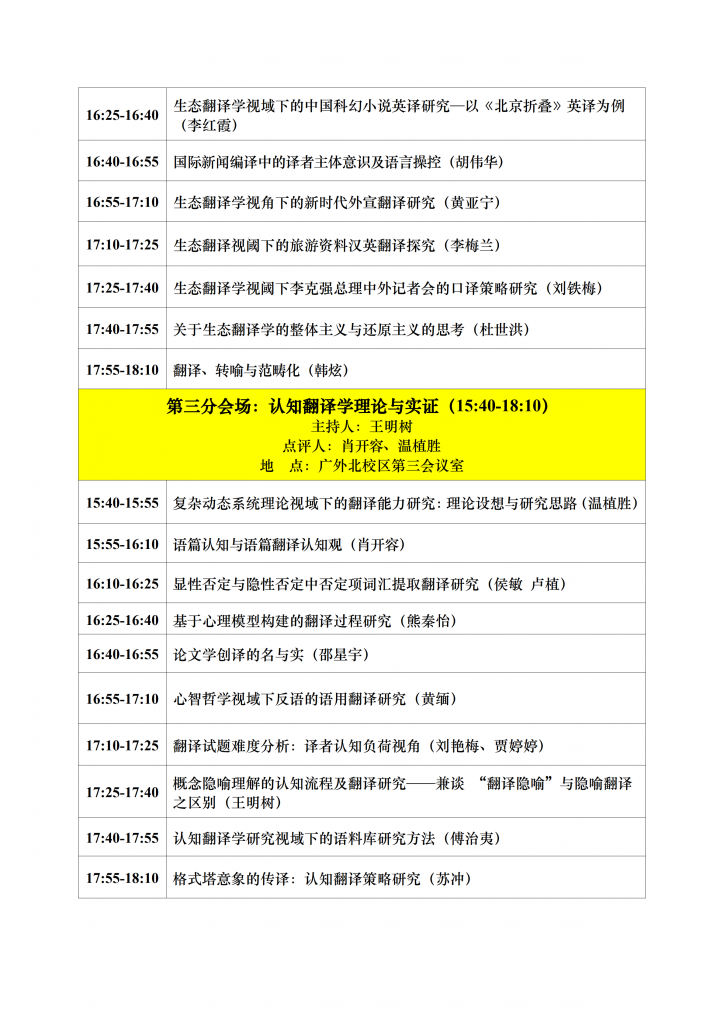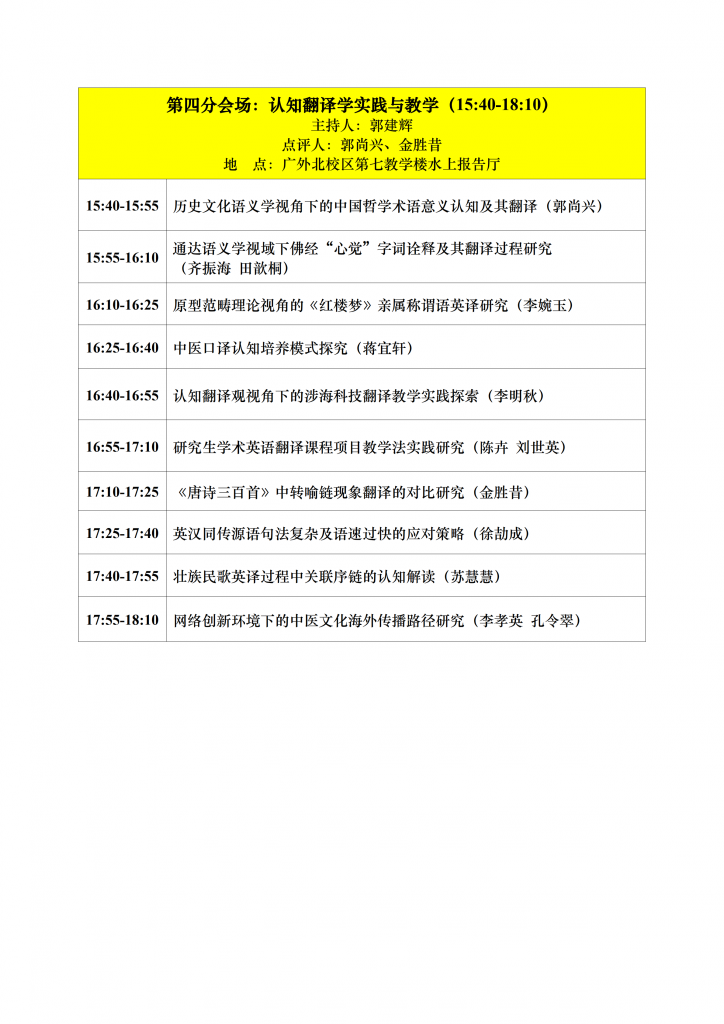第二届全国生态翻译与认知翻译研讨会
人工智能时代口译技术应用研究
王华树 | 国内首部聚焦口译技术应用和教学的著作
新书推荐
口笔译教育与评价国际论坛 二号公告
在厦门大学百年校庆之际,邀您齐聚厦门、共襄盛举
论坛推荐
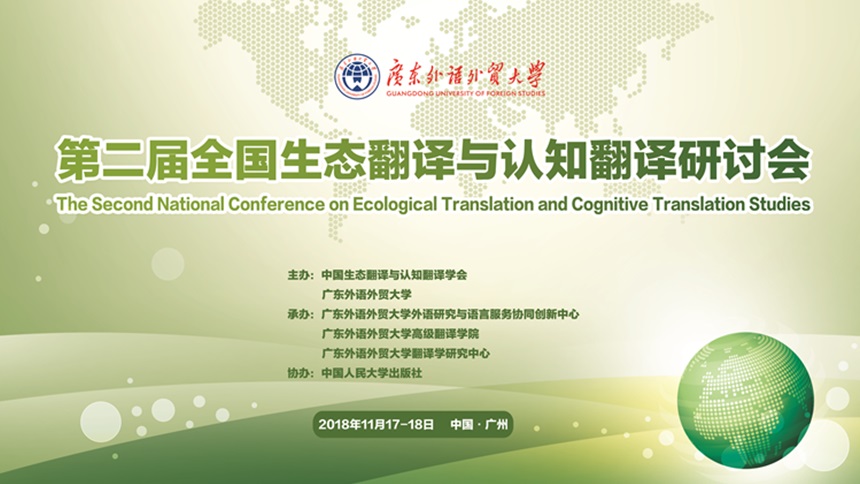
第二届全国生态翻译与认知翻译研讨会
直播:11月17日-18日
专题栏目《ECtrans2018》
(按发言顺序)
生态翻译学的前沿动态与国际化发展
胡庚申 郑州大学/清华大学
肇始于 20 世纪之初,生态翻译学经历了起步、立论、倡学、创派等不同阶段的发展,目前正处于深化拓展、优化提升阶段。该阶段发展的具体思路是:以前期研究为基础,以现存问题为导 向,以解决问题为要务,以理论创新为重心,以优化体系为目标,以国际影响为标志,从而使生态翻译学研究范式的内涵发展和国际化发展实现同步共进。本次演讲将集中在生态翻译学的研究前沿与发展动态,具体包括:
(1)理论指导思想的“新生态主义”和“新生态主义翻译观”;
(2)翻译本质新解的“生生之谓译”;
(3)译论理念的从(西方)“两极化” 到(东方)“生态化”;
(4)内容取向的从侧重隐喻(虚指)到“虚指”与“实指”并举;
(5)研究重点的从侧重“译事中”到“译事中”与“译事后”并举;
(6)翻译环境的从“语境”到“译境”(涵盖语言服务及翻译技术环境);
(7)体系构架的从“宏-中-微”(三层次)到“道-理-法-术”(四象易);
(8)系统传播的从文字描述到模型创建;
(9)发展模式的从生态翻译学本体到“生态翻译学 +”的跨学科研究共同体;
(10)生态翻译学的国际化发展等。
 胡庚申
胡庚申
香港浸会大学翻译研究哲学博士、英国剑桥大学英语与应用语言学博士后学人,清华大学二级教授,国务院政府特贴专家。现为郑州大学特聘教授,博士生导师。胡庚申是生态翻译学创始人,中国生态翻译学派创始人,国际生态翻译学研究会创始人;中国生态翻译与生态语言、生态文学、认知翻译、语用翻译、外事翻译学会等荣誉会长。现任两个国际学术机构主席职务,国际译联(FIT)翻译与文化委员会成员,国际期刊 Journal of Eco-translation Studies 主编。国内外发表文章 200 余篇,出版专著丛书 38 部;国家级教材成果获教育部一等奖;以其原创“生态翻译学”命名的课题研究 2008 年和 2018 年连续获得国家社科基金立项。在其理论指导下全国已有 120 余所高校的 380 多位研究生获得硕士/博士学位;其著述的“他引率”居国内语言翻译学界前列(据 2015版和 2017 版中国哲学社会科学最有影响力学者排行榜);被学界誉为“中国学术走向世界的排头兵”、“开发本土学术资源的一面旗帜”。
中国认知翻译与生态翻译话语体系
王建华 山西师范大学/中国人民大学
认知翻译和生态翻译的 citespace 可视化呈现分析发现,中国认知翻译学从1996 年发表第一篇论文以来形成两大研究热点词场:认知和翻译。两大热点包含 16 个子研究热点,研究历时来看分为四个阶段:1996 到 1998 年认知语言学和认知科学与翻译初步交叉,形成认知翻译跨学科研究;2002 到 2004 年形成认知翻译、功能语言翻译、翻译方法论、认知语境和翻译过程概念等认知翻译研究的热点;2002 到 2012 年形成认知翻译观、认知隐喻、认知翻译学、认知模式、翻译教学和图式理论与翻译等热点;2014-2018 年认知语言学翻译观、认知图式理论、隐喻翻译、认知翻译体验、翻译过程研究、跨文化翻译、翻译主体观、翻译技巧以及对比翻译等。认知翻译机构自 2014 年以来形成广东外语外贸大学、四川外国语大学和西安理工大等研究中心。生态翻译自 2003 年以来形成了以适应和选择为中心的两大热点词场,两大研究热点词场既是研究内容也是研究方法,并形成以清华大学和澳门理工为研究中心的研究机构。认知翻译与生态翻译话语体系以认知和翻译,选择和适应形成了研究内容与研究方法相融合的话语体系,此体系对引领翻译学科的发展具有架构的作用,必将为翻译学研究和发展起到一定的指导作用。
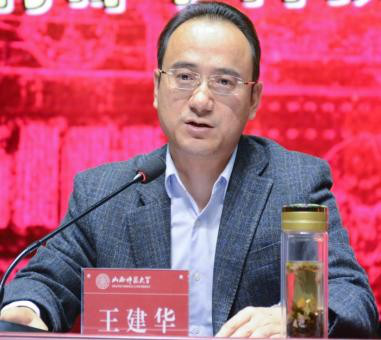 王建华
王建华
中国人民大学外国语学院教授,博导,山西师范大学副校长兼外国语学院院长。中国生态翻译与认知翻译学会副会长,中国翻译认知研究会副会长,中国外语界面研究会常务理事。美国蒙特雷国际研究院高级访问学者。主要研究方向:语言认知研究、口译过程认知研究、口笔译理论研究和媒体话语研究。近年来主持国家社科基金项目和国家广电总局“一带一路”文化外宣项目多项。出版有《口译认知研究》等多部专著。在《外语教学与研究》、《中国翻译》、《外语学刊》、《外语与外语教学》和 《光明日报》(理论版)等期刊发表核心论文数十篇。
具身认知、象似性与翻译
文 旭 西南大学
具身认知是第二代认知科学中的核心概念,是概念结构的认知基础,而语言表征则是概念结构的反映。象似性是指语言结构与人的经验结构或概念结构之间有一种自然的联系,因此象似性与具身认知紧密相关。语言的象似性体现在语言各层次,尤其在句法结构中表现得最为突出,其中主要有距离象似性、复杂象似性或曰数量象似性以及顺序象似性等。研究具身认知及语言的象似性对翻译及翻译学都具有重要的启发意义。本文基于具身认知、概念结构及象似性原则,通过英汉翻译实例,阐释认知翻译及认知翻译学中的一些基本问题。
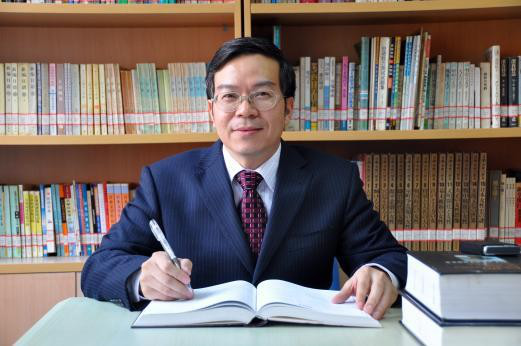 文 旭
文 旭
博士,二级教授,博士生导师,西南大学外国语学院书记。国务院政府特殊津贴获得者,教育部“新世纪优秀人才支持计划”项目获得者。国家哲学社会科学基金学科规划评审专家,国家出版基金评审专家,第三届全国翻译专业学位研究生教育指导委员会委员;西南大学学术委员会副主任委员。中国生态翻译与认知翻译学会会长、中国认知语言研究会副会长、中国语用学研究会副会长,重庆市外文学会会长。国家社科基金重大项目“认知语言学理论建设与汉语的认知研究”首席专家。Cognitive Linguistic Studies 主编;Review of Cognitive Linguistics 等国内外学术期刊编委。在 Metaphor and Symbol,Brain and Language,Cognitive Linguistics,《外语教学与研究》,《中国语文》等国内外学术期刊上发表论文 160 多篇;出版学术专著和教材 20 多部。主持国家社科基金项目 3 项,获国家级教学成果等各类教学科研奖 11 项。
Cognitive Translation Studies as a Fast Growing Area in Translation Studies
李德凤 澳门大学
Over the past decade, Cognitive Translation Studies (CTS), sometimes also referred to as translation process research (TPR), has attracted a great deal of attention in translation studies and beyond. This presentation will outline the evolution of this area of research, focusing on the research approaches and topical issues of this line of research and argue that cognitive translation studies may hold the key to firmly establishing Translation Studies as a truly independent discipline. It will conclude with a discussion of some principal caveats to watch out for in carrying out CTS projects.
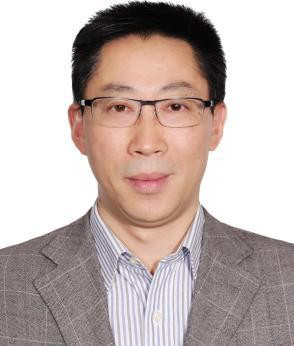 李德凤
李德凤
世界翻译教育联盟理事长、欧洲翻译学会出版委员会顾问、广东外语外贸大学云山讲座教授。澳门大学翻译学教授,翻译传译认知研究中心主任, 博士生导师,上海市“千人计划特聘专家”、中国跨文化与语料库翻译研究会副会长、全国语料库翻译研究会副会长、中国翻译认知研究会副会长、全国 MTI 教学指导委员会学术委员。先后担任英国伦敦大学翻译研究中心主任及翻译学教授,上海交通大学“星涛湾”讲习教授,山东大学外国语学院院长及翻译学讲座教授,香港中文大学翻译硕士课程主任;还先后担任亚太电脑辅助语言学习协会副会长、国际翻译与语言研究学会翻译教学委员会委员等职。 目前受国际著名学术出版社斯伯林格出版集团邀请,主编《译学前沿》(New Frontiers in Translation Studies)系列丛书。
认知翻译的意象图式翻译模型
杨朝军 河南大学
Venuti (1995:17)认为,Translation is a process by which the chain of signifiers that constitutes the source-language text is replaced by a chain of signifiers in the target language which the creator provides on the strength of an interpretation.也就是说,翻译是用一种语言形式(目标语)将另外一种语言形式(源语)的内容重新表达出来的过程。因此 Nida(1964)认为,在源语和目标语之间存在着 source language→analysis→transfer→restructuring→target language 这样一个翻译过程。其中 analysis 指的是对源语语言的理解,涉及对源语的句法、词汇、语义分析等;transfer 包括 literal transfer, minimal transfer, literary transfer 等,指的是在功能对等的前提下两种语言之间的转换,restructuring 指的是经过转换之后的目标语言应该按照译入语的习惯进行重新架构,以符合译入语读者的表达习惯。虽然翻译是语码转换的观念比较直观,也很容易被人理解和接受,但显然翻译不仅仅限于语码转换本身,因此学者开始从其他方面寻找翻译的精髓,例如 Pliny the Younger 提出翻译中转换的不是语言,而是翻译双方互动而产生的价值(Judging value of translating in both directions);Alexander Fraser Tytler, Etienne Dolet 则强调翻译中内容和目的(ideas, content and intention)的传达;W. von Humboldt, Water Benjamin 等则更关注翻译过程中的精神实质(spirit)或前生后世(afterlife)。这些观点虽然跳出了语言符号的原宥,但由于过于抽象,因此,在实践中缺乏操作性和可行性。那么,翻译的本质到底是什么呢?本文基于认知语言学的相关理论,试图证明以下观点:
1)翻译过程分析中的关键要素是意象图式;
2)意象图式的不同决定了翻译策略和翻译方法的选择;
3)翻译的评价取决于对意象图式的准确理解和传达。
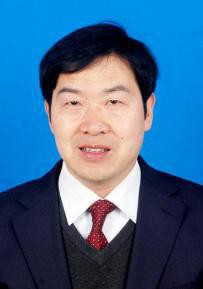 杨朝军
杨朝军
1967 年 2 月生,博士,教授,博士生导师,河南大学外语学院院长、《外文研究》主编,全国语用学研究会理事,河南省翻译协会副会长,河南省翻译硕士教学指导委员会委员,中国博士后基金评审专家、国家社科基金评审专家。研究方向为语用学、认知语言学、翻译理论与实践,在 Journal of Linguistics,《外语教学与研究》《现代外语》《中国翻译》等发表学术论文 50 多篇,在高等教育出版社、科学出版社等出版专著、译著、教材 15 部,主持国家社科基金项目 1 项、省部级项目 3 项。
视译靶域:眼动注视点的实证研究
Sight Interpreting Target Domain: An Empirical Study of Eye-Tracking
Fixations
康志峰 复旦大学
本研究以所教授的非英语专业 83 名学生译员为研究对象,以眼动跟踪靶域(TD)注视点记录为研究方法,探究眼动跟踪占位注视点与视译绩效的相关度。通过眼动跟踪 TD 占位注视点实验数据解析、SPSS 统计计算以及 TD 占位注视点与绩效检验,得出以下结论:1)被试 TD 占位注视点的数量与其绩效表层不构成正比,亦不成反比;2)被试无论其绩效高低,其 TD 占位注视点注视时间长度与绩效亦无表层差异;3)成绩较好的被试 TD 占位注视点相对集中,而成绩较差的被试 TD 占位注视点相对散乱;4)成绩好与成绩差的被试 TD 占位注视点的数量、注视时间长度以及 TD 占位注视点的集中度凸显其深层差异性。进而析出,心理词典、LTM 信息、双语转换技能等是影响学生译员眼动跟踪 TD 占位注视点数量和时间的主要因素。鉴于此,采取相应的心理词典扩大策略、预制语块策略、灵动认知策略以及熟练双语转换策略等可以增加 SI 绩效。
This study investigates the sight interpreting behaviors by 83 undergraduate interpreters of non-English majors and, through the methodology of eye-tracking TD fixation recordings, explores the extent of correlation between the occupying fixations and their performances. The analyses are conducted on the big data through the experiments of eye-tracking occupying fixations, SPSS calculation, TD occupying fixations and performance tests. The results show that:
1) The number of TD occupying fixations in SI is superficially not proportionate to the performances of SI, nor inversely proportional to it;
2) the testees with different performances have similar surface duration of TD occupying fixations in SI;
3) the testees with higher scores focus more on the relative concentration of TD, while those with lower scores scatter their occupying fixations;
4) the testees with high scores and those with low ones highlight their deep differentiations from the perspective of number, duration and concentration of TD occupying fixations.
And the further analyses show that mental lexicon, LTM information, bilingual transforming skills are the main factors that affect the number and length of the student interpreters’ occupying fixations. In view of this, the corresponding mental lexicon expansion strategies, prefabricated chunking strategies, flexible cognitive strategies and skilled bilingual transforming strategies should be taken in order to achieve Synergistic performances of SI.
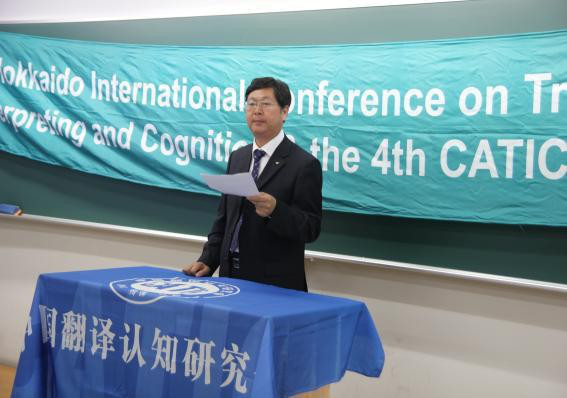 康志峰
康志峰
复旦大学外国语言文学学院教授,博士,博士生导师,中国翻译认知研究会会长,《翻译研究与教学》主编,中国生态翻译和认知翻译学会副会长,中国语言教育研究会常务理事,中国修辞学会副会长,中国翻译协会专家会员。任国家社科项目以及省部级社科项目盲 审 专 家 、 美 国 Science Publishing Group 的 International Journal of Applied Linguistics and Translation 等 3 家期刊,国内 5 家外语名刊口译学研究、翻译学研究、应用语言学等稿件盲审专家和期刊编委。曾在美国马里兰圣玛丽大学教学,访问过哈佛大学、麻省理工学院、剑桥大学等多所国外大学并做学术报告,在国内的财富论坛、远程教育、花卉博览会等做过多次同声传译、交替传译、联络口译等。获部级奖项 2 项,卡西欧奖 10 项。主持国家项目、省部级研究项目等 10余项。在International Journal of Language and Linguistics, Journal of Literature and Art Studies 等国际期刊,《外语与外语教学》、《外语教学》等国内外期刊发表期刊论文 100 多篇,出版专著、教材等 50 多部。
Translation by Simulation — Evidence and Hypothesis from Chinese/English
Translation Data
林子予 澳门理工学院
Based on the English translations of two classical Chinese poems: the first being Wang Wei’s 鹿柴 (lu zhai), and the second, Ma Zhiyuan’s 天净沙·秋思 ( tian jìng sha · qiu si), and assisted by a detailed analysis of the big data retrieved from the Chinese/English parallel corpora, as exemplified by the Chinese term 明白 (ming bai) and its English equivalents, and the English phrase “be going to” and its Chinese equivalents, this presentation gleans and presents evidence for the argument that variations and multiplicities in Chinese/English translation can be systematically motivated by the operations of such cognitive devices as metonymic chains, salience recognition, iconicity representation, schematicity and elaborations, semantic frame accessing, and mental space blending. Collectively, they contribute to mental simulation, which refers to the mental construction of perception and action without actually seeing or acting, a human cognitive ability that is often discussed together with the theory of embodiment, That is, our minds are affected and shaped by our bodies and life experiences.
Along this line of argument, translation processes can be considered as being heavily manipulated by translators’ mental simulations, which is consistent to the simulation semantics theories for language comprehension and concept processing. The translation results reflect the outcome of a two-stage procedure: simulation generation and simulation restoration. Specifically, from the source language and culture, a translator derives his mental simulation, which, nevertheless, is conditioned by numerous influencing factors, ranging, for example, from the mundane daily life to different abilities in language use and intercultural communication, the higher level of which can only be achieved through many variables, such as personal efforts, education, and opportunities of cross-cultural exposures. On the other hand, when the translator represents or restores his simulations in the target language and culture, the translation he produces is also conditioned by those constraining factors. For this reason, simulations grounded on the source language input and those presented in the target language output are highly individualized. This, among others, explains why identical translations of the same source text can be rarely found. The translation by simulation hypothesis opens up another theoretical paradigm in translation studies.
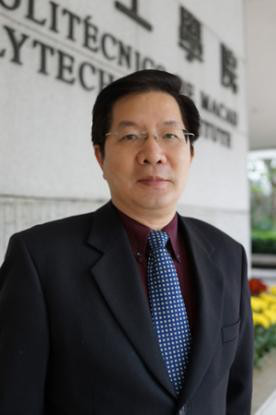 林子予
林子予
Zi-yu Lin, Ph.D Director, MPI-Bell Centre of English, Professor, School of Languages and Translation, Macao Polytechnic Institute, MSAR. Member of International Federation of Translators (FIT) and Federation of Translators and Interpreters of Macao (FTIM).
Editorial Board Member and Manuscript Reviewer, Intercultural Communication Studies, the official journal of the International Association for Intercultural Communication Studies (2010-present). Editorial Board Member, Library and Information Service, The Chinese National Sciences Library of the Chinese Academy of Sciences (2014-Present). Associate Editor, Macao Language and Cultural Research, Macao Polytechnic Institute (2015-Present). His recent publications include: Lin, Zi-yu. (2018), Variations in Tang Poetry English Translation–A Cognitive Rationale. in Lei H. I. (Ed.), Macao Language and Culture Research (2017), Macao: Macao Polytechnic Institute, 292-309; Lin, Zi-yu. (2017), Mental Simulation and Translation. ICS Intercultural Communication Studies, Kingston, RI: International Association for Intercultural Communication Studies, XXVI: 2, 145-156. Referred.; Lin, Zi-yu. (2017), Chinese/English Parallel Corpora, Language Comprehension, and Abilities in Chinese/English Translation or Chinese as a Second Language. in Lei H. I. (Ed.), Macao Language and Culture Research (2016), Macao: Macao Polytechnic Institute, 376-395. Lei, Heong Iok, Cui, Mingfen, Lin, Zi-yu, 2018, International Chinese, Commercial Press (in press); Lin, Zi-yu, Radwanska-William, Joanna, Zhang, Yufeng, 2018, Lotus Field: Reflection, Macao: Macao Polytechnic Institute; Lei, Heong Iok, Zhou, Jian, Lin, Zi-yu. (Eds.), 2018, Macao Language and Culture Research, Macao: Macao Polytechnic Institute.
翻译过程研究的认知科学方法论
Methodology in Cognitive Sciences for Translation Process Research
卢 植 广东外语外贸大学
认知科学路径下的翻译研究试图探究和解释译者的心理加工过程的内部运作机理,如译者对文本的重组过程、对翻译策略的选择和运用过程,文化背景和语言知识对译者思维过程、源语理解及译语产出的影响,译员翻译能力的开发与评估等等。认知科学关照下的翻译过程研究以认知科学的模型思维描写和解释译者的翻译行为和策略选择。本文概述认知科学与翻译过程研究的发展及现状,阐述翻译过程研究中主要的研究对象和研究方法,即有声思维法、键盘记录法、屏幕录像法、眼动追踪法、三元数据分析法、事件相关电位法和功能磁共振成像法,并分析其应用于翻译过程研究的优缺点,尤其是提出采用三元数据分析法即多种研究方法相互研究验证的方式提高实验研究的信度和效度,推动我国翻译过程研究的发展。论文旨在为认知翻译的研究和发展提供一定的借鉴和启发,为我国翻译过程的认知研究做方法论和工具论上的准备,推进翻译过程研究的持续和深入发展。作为一种新兴事业的翻译过程研究需要翻译研究者的合作能力和跨学科素养,协同合作、交叉创新是翻译过程研究的必然之选和必由之路。
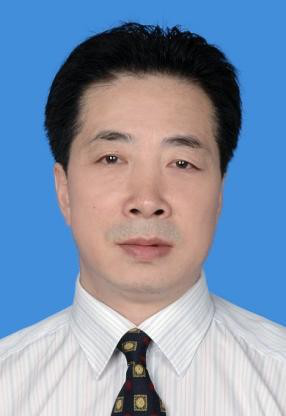 卢 植
卢 植
博士,博士生导师,二级教授,广东省人文社科研究重点基地广东外语外贸大学翻译学研究中心专职研究员;研究领域为应用语言学和认知翻译学。1996 年广东外语外贸大学师从桂诗春教授获博士学位,曾以高级访问学者身份访问英国雷丁大学、澳大利亚格里菲斯大学和悉尼大学、美国密歇根大学、肯特州立大学。2008 年选聘为暨南大学应用语言学专业博导,2011 年选聘为宁波大学“包玉刚特聘讲座教授”,2015 选聘为广东外语外贸大学“云山杰出学者”、翻译学博导、国家二级教授。曾任暨南大学外国语学院和宁波大学外国语学院院长。在国内外学术期刊 Cortex,Brain and Language, System, 《外语教学与研究》、《外国语》、《现代外语》等发表论文 60 余篇;出版学术专著及译著 8 部,编著、参编国家规划教材 3 部。主持完成国家社科项目 2 项及省部级人文社科项目 6 项。2018 年完成国家社科课题“应用认知语言学视域下的英语教与学实证研究”和广东省人文社会科学重点研究基地广东外语外贸大学翻译学研究中心招标课题重点项目“认知翻译学的学科理论基础及体系构建究”;在研项目有教育部哲学社会科学重大攻关项目“我国外语教育改革和发展研究”,广东省高层次人才引进联合项目“认知翻译学的理论及模型建构”。兼任十一五国家级规划教材编委会成员、教育部学位与研究生教育评估中心特约评审专家、国家社科项目通讯评审专家、教育部人文社科项目通讯及成果鉴定评审专家,《外语教学与研究》、《外国语》、《现代外语》、《解放军外国语学院学报》等期刊特邀审稿人。中国认知语言学研究会、中国认知神经语言学研究会、中国心理语言学专业委员会等学会常务理事,中国第二语言加工专业委员会、中国生态翻译与认知翻译研究会、中国翻译与认知研究会等学会副会长,翻译学学术集刊《翻译研究与教学》副主编。
Measuring Cognitive Effort in Translation and Post-editing
Isabel Lacruz Kent State University
The three‐way relationship between effort, speed, and quality makes it important for translation process researchers to find ways to understand and measure the effort that translators exert as they carry out their professional work. We discuss the history and development of this research, tracing back to its origins in cognitive psychology, specifically the endeavor to understand the bilingual mind. We indicate how paradigms from cognitive psychology have been adapted to empirical research in translation to investigate cognitive effort in translation and post‐editing. We outline signifcant results that have been obtained so far and propose possible avenues for future research.
 Isabel Lacruz
Isabel Lacruz
Isabel Lacruz received her PhD in Experimental Psychology (Cognitive) from Kent State University where she is now Associate Professor of Translation Studies. She teaches doctoral courses on Translation and Cognition and Empirical Research Methods for Translation, as well as master level translation practice courses. Lacruz’s current research interests include investigation of the mental processes involved in translation and post-editing. She has published many theoretical and empirical articles on cognitive aspects of translation and post-editing.
认知翻译及无意识翻译现象的认知性研究
A Cognitive Approach to Cognitive Translation and Unconscious Translation
傅敬民 上海大学
皮特·纽马克在 1981 年提出过一个“认知翻译”概念,认为只有在认知翻译后期才会出现语义翻译和交际翻译的分歧。但长期以来,认知翻译并没有引起学界足够的重视。本文通过对十个译者的一次翻译实践进行认知分析,探讨认知翻译的认知性,进而探讨无意识翻译的认知性。本文认为,无论是认知翻译还是无意识翻译,都并非只是存在于前翻译期间。相反,在整个翻译过程中,它们会不时地出现。研究表明,导致认知翻译或者无意识翻译的因素很多,其中原文文本与目的语文本的匹配度以及译者的认知度为最显著因素。
In 1981, Peter Newmark employed the concept of Cognitive Translation, proposing that communicative translation and semantic translation bifurcate at a later stage of the cognitive translation. However, cognitive translation has since remained insufficiently being studied. In response to Newmark’s proposition, we have taken a cognitive analysis of ten subjects’ translational cognition, along with another concept of unconscious translation. The results show that all interviewed subjects now and then experienced cognitive translation and unconscious translation in the whole process of translating. Additionally, many factors result in cognitive translation and unconscious translation, among which the parallelism of ST-TT and translation’s cognitive competence outstand remarkably.
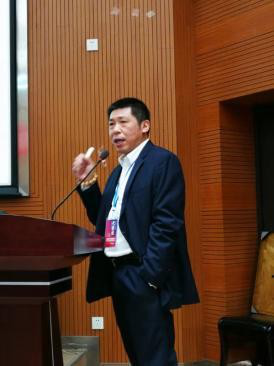 傅敬民
傅敬民
博士,上海大学外国语学院教授,博士生导师,《上海翻译》执行主编,上海市科技翻译学会副会长,中国翻译协会理事,上海市外文学会常务理事。主持国家社会科学基金项目 1项,翻译出版译著《翻译与规范》,《年轻的狮子》、《亚当·比德》等 10 余部,编著、主编翻译教材《英汉翻译辨析》、《实用商务英语翻译教程》等四部;在国内核心期刊发表学术论文四十余篇。曾获得 “上海市育才奖”等荣誉称号。
译者工作台的生态系统—-以职业为导向的翻译技术教学模式
The Ecosystem of Translator Workstation–A Profession-oriented Model on the Teaching of Translation Technology
莫爱屏 广东外语外贸大学
自翻译硕士专业学位(简称 MTI)于 2007 年在中国设立以来,目前国内已有 206 所高等院校开设了 MTI 专业。该专业旨在培养高水平的且须具备使用电子工具和资源能力的职业译者,然而这一技能在翻译教学中尚未受到足够的重视。本文旨在从社会建构主义视角为 MTI 学生构建一个理想的学习环境,从传统的课堂教学转向职业译者工作的真实环境,并探究这种教学模式的可行性和有效性。本研究主要关注:
1)如何协调各种主客观因素以构建一个有利于学习的理想环境?
2)该环境在何种程度上有助于 MTI 学生学习电子工具?
3)如何在两年的教学时间里帮助缩短学生译者和职业译者在工具使用能力上的差距?本文探究译者工作台外部环境各成分之间的互动关系,提出名为“译者工作台的生态系统” 的理想模式,旨在让学生在与未来工作场景相似的环境中更好地学习电子工具。本研究认为,针对特定的教学内容,职业工作场景相对于传统课堂教学有更大的优势,此类研究对目前中国译者教育有较大的启示。
Ever since the program—Master of Translation and Interpreting (henceforth MTI) was approved in 2007, there are already 206 higher learning institutions running such a program in China, aiming at training professional translators with advanced translation competence. Part of this competence is the ability to use the electronic tools and resources, which has not received adequate scholarly attention in the field of translation studies. The objective of this research is to construct an ideal learning environment for the MTI students from a social constructivist perspective by exploring the possibility and benefit of bringing the students out of the traditional classroom teaching into the authentic environment wherein professional translators use electronic tools on a daily basis. This research addresses the following issues:
1) What constitutes an ideal environment therein its various components interact to facilitate the student’s learning? 2) In what way does such an environment assist the MTI students to learn to use the electronic tools? 3) How can the gap between the student translator and the professional translator be bridged in terms of the skills to use the electronic tools in a 2-year training program? In response to these questions, this research explores the interaction among the various components of the external environment of the translator workstation. It proposes an ideal learning environment metaphorically referred to as “the ecosystem of translator workstation”, which aims to enable the MTI students to learn to use the electronic tools in an environment similar to their future workplace. Such a research has great implications for translator education in present-day China by revealing what is best taught or trained in the workplace rather than the traditional classroom setting.
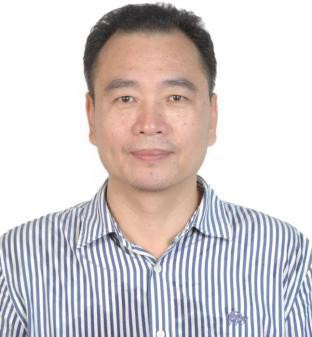 莫爱屏
莫爱屏
广东外语外贸大学翻译学研究中心主任(2011–)、高级翻译学院教授(2005–)、博导,先后求学于衡阳师范学院(1978.10-1981.07)、中南大学(硕士)、新加坡南洋理工大学(英语教育硕士文凭)、广东外语外贸大学(博士)、英国剑桥大学等。中国翻译协会专家会员,中国逻辑学会常务理事、中国逻辑学会语用学专业委员会常务理事、秘书长,广东外国语言学会常务理事、副秘书长等、国家社科基金项目成果通讯鉴定专家等。主要研究方向:翻译学、语用学、文化外译等。主要成果:主持或参与国家级、省部级等项目多项;在国内外主要外语类核心期刊 Babel、Perspectives、《外语教学与研究》、《现代外语》、《中国翻译》、《外语教学》、《外语研究》、《外语外语教学》、《中国外语》、《外语学刊》、《解放军外国语学院学报》、《翻译季刊》(香港)等发表论文数篇。
“第二届全国生态翻译与认知翻译研讨会”
在广东外语外贸大学隆重举行
2018年11月17-18日,“第二届全国生态翻译与认知翻译研讨会”在广东外语外贸大学隆重举行。本次会议由中国生态翻译与认知翻译学会及广东外语外贸大学联合主办,由广东外语外贸大学外语研究与语言服务协同创新中心、高级翻译学院和翻译学研究中心共同承办,中国人民大学出版社协办。
会议以“新时代背景下生态翻译学与认知翻译学的学科体系构建”为主题,吸引了来自清华大学、中国人民大学、复旦大学、上海外国语大学、上海大学、北京第二外国语学院、郑州大学、西南大学、澳门大学、河南大学、山东大学、山东师范大学、澳门理工大学、贵州师范大学及美国肯特州立大学等多所高校的知名语言学、翻译学专家相聚广外,围绕会议主题展开深入的学术交流与探讨。
广东外语外贸大学副校长阳爱民,中国生态翻译与认知翻译学会名誉会长胡庚申,会长文旭,副会长王建华、曹进、刘振前、康志峰、杨朝军、卢植,秘书长刘瑾,常务理事杜世洪、齐振海、钟守满、王祖友,学术委员会副主任郭尚兴及世界翻译联盟理事长、澳门大学教授李德凤,澳门理工学院教授林子予,山东财经大学外语学院院长李毅,美国肯特州立大学副教授Isabel Lacruz,澳门理工学院副教授温植胜,广东外语外贸大学高级翻译学院院长赵军峰等嘉宾出席了开幕式。开幕式由广东外语外贸大学翻译学研究中心教授卢植主持。
广东外语外贸大学副校长阳爱民在其欢迎辞中介绍了广东外语外贸大学的基本概况、翻译学发展状况、外语学科的优势与成就,并号召全国各大学者加入广外研究团队。阳副校长期待本次会议的与会专家们在深入研讨交流中碰撞出新的思想火花,为翻译研究提供新方式,提高学科质量,为跨文化交流提供新的理论思想。
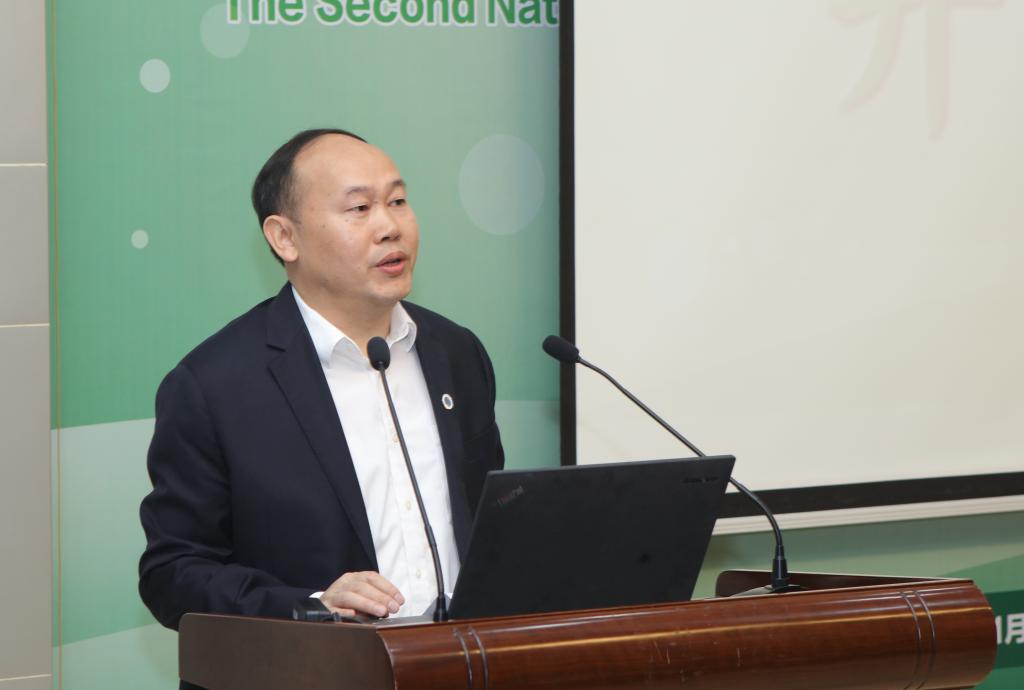
广东外语外贸大学副校长阳爱民开幕式致辞
中国生态翻译与认知翻译学会名誉会长、清华大学二级教授兼郑州大学特聘教授胡庚申指出生态翻译学逐渐发展成熟,认知翻译近年来逐渐成为翻译研究热点,我们中国学者在多年奋斗的过程中,对生态翻译与认知翻译进行了不同维度的思考探究,其成就在于中国翻译界独立提出新的视角体系,不再局限于充当西方翻译方法的验证者。

中国生态翻译与认知翻译学会名誉会长
清华大学二级教授胡庚申开幕式致辞
中国生态翻译与认知翻译学会会长、西南大学教授文旭认为生态观念在中国由来已久,古有道教“天人合一”思想,今有习主席“生态文明观”,并指明生态翻译与认知翻译作为新兴起的研究方向,发展前景良好,已在国际范围内引起关注,期待各位翻译学者能对此作出贡献。
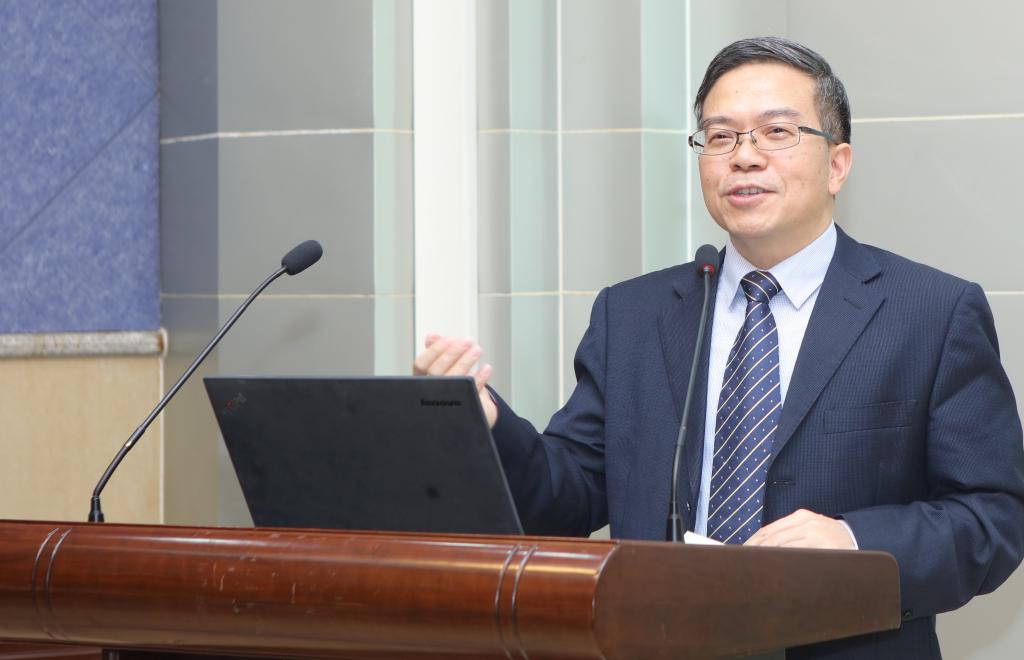
中国生态翻译与认知翻译学会会长
西南大学教授文旭开幕式致辞
本次研讨会邀请了语言学和翻译学领域诸多学界精英出席,会上共有十一位专家作了主旨发言。专家们紧密围绕生态翻译与认知翻译研究话题,分享自身研究成果。他们提出生态主义新思路,探究中国话语权建构,探索认知语言学及认知语法,深入分析翻译过程,普及翻译图示化分析法,发展眼动追踪等研究方法。众多学者参与探讨,与会者用热烈的掌声对以上研究成果表达了高度赞赏。
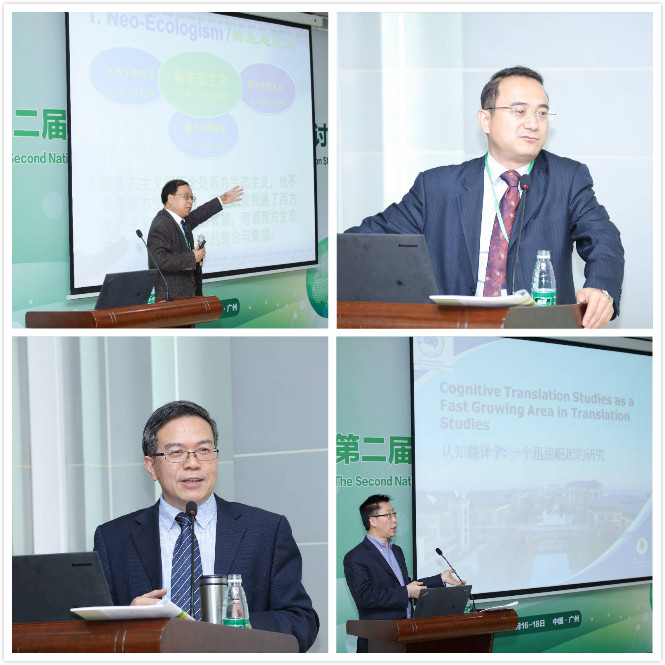
主旨发言专家
清华大学二级教授胡庚申(左上)
中国人民大学外语学院教授王建华(右上)
西南大学教授文旭(左下)
澳门大学教授李德凤(右下)
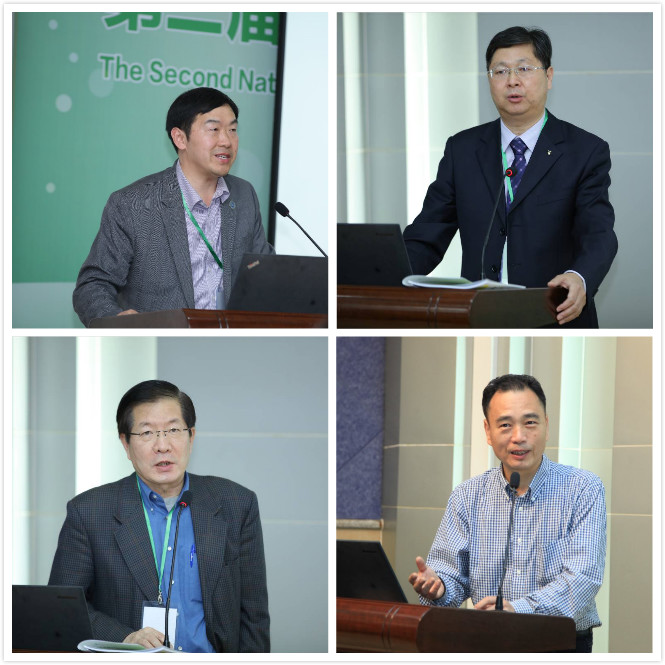
主旨发言专家
河南大学外语学院院长杨朝军(左上)
复旦大学教授康志峰(右上)
澳门理工学院教授林子予(左下)
广东外语外贸大学翻译学研究中心主任莫爱屏(右下)
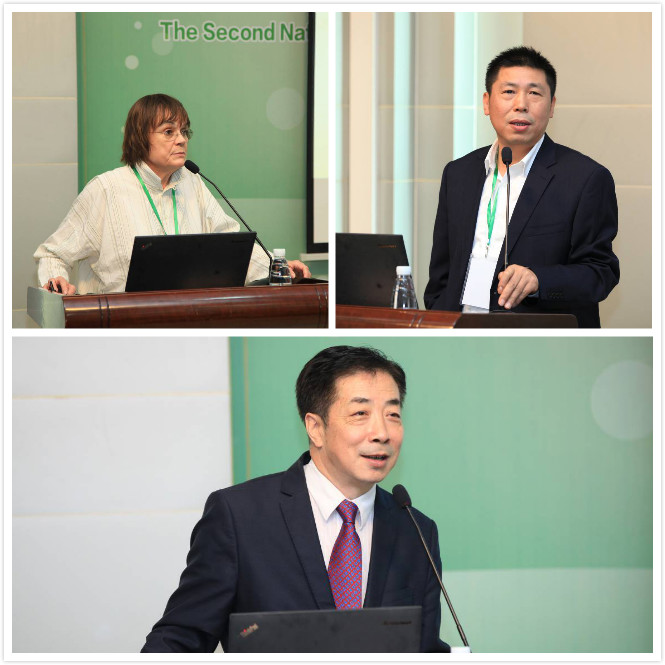
主旨发言专家
美国肯特州立大学副教授Isabel Lacruz(左上)
上海大学教授傅敬民(右上)
广东外语外贸大学教授卢植(下)
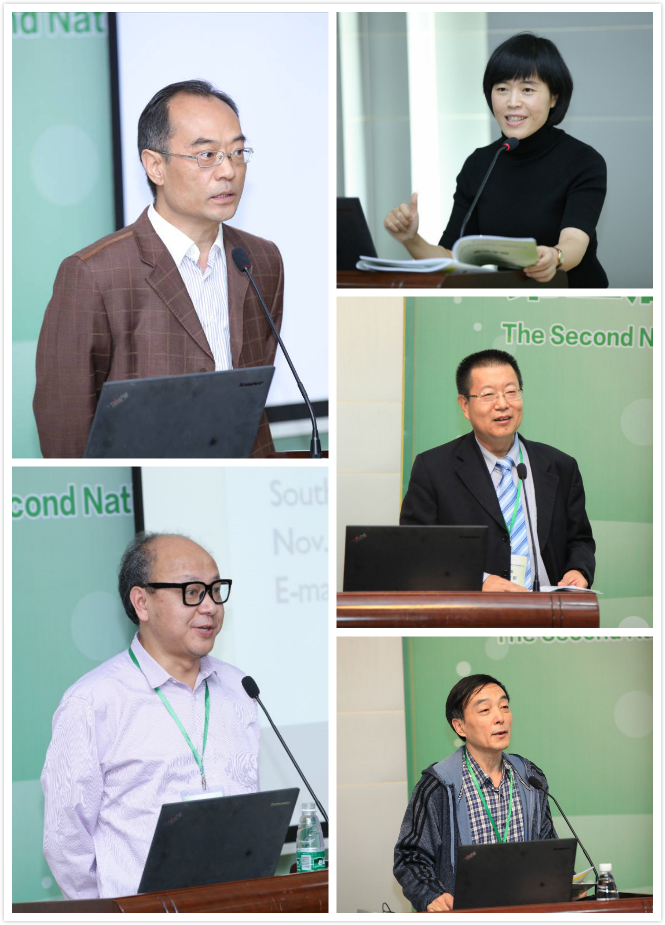
主旨发言环节主持人
广东外语外贸大学教授赵军峰(左上)
西南大学教授杜世洪(左下)
贵州师范大学外国语学院院长刘瑾(右上)
山东大学教授刘振前(右中)
北京第二外国语学院教授齐振海(右下)
会议围绕“新时代背景下生态翻译学与认知翻译学的学科体系构建”的主题设立了四个分会场,分别就“生态翻译学概念与前沿”、“生态翻译学理论与实践”、“认知翻译学理论与实证”、“认知翻译学实践与教学”等四个分论题进行交流探讨。分会场共有30余名学者作了交流发言,每个分会场各有2-3位专家参与点评。
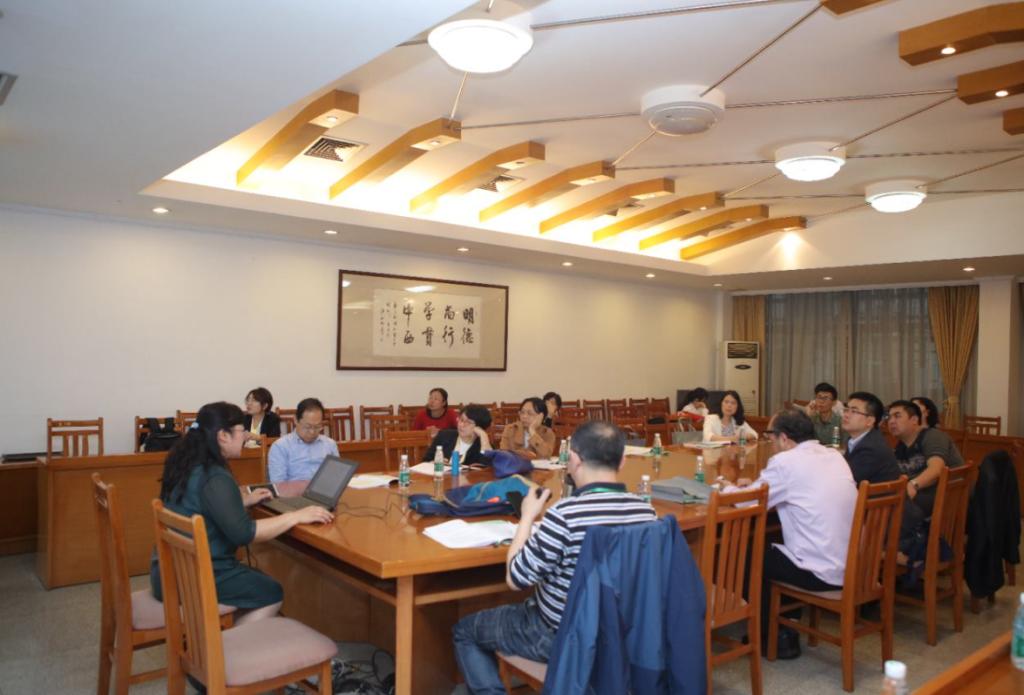
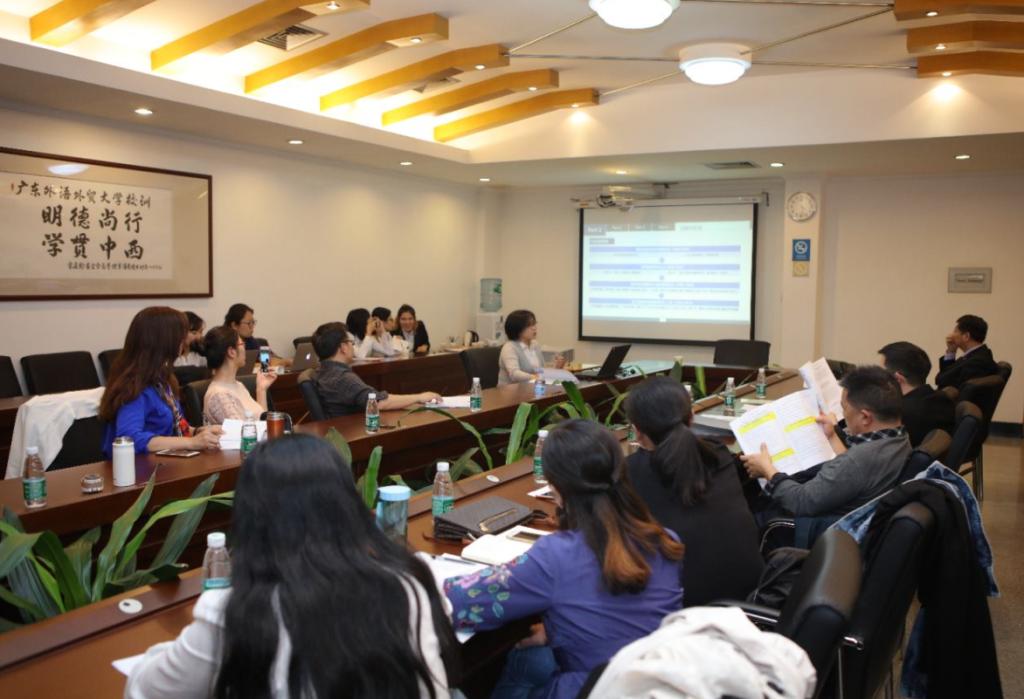
分会场剪影
会议闭幕式由广东外语外贸大学翻译学研究中心主任莫爱屏主持,中国生态翻译与认知翻译学会副会长、西北师范大学外国语学院院长曹进为本次会议作总结发言。他对本届会议主办、承办与协办三方的共同努力表达了由衷感谢,分别用“三高”——高规格、高水平、高密度,“三心”——精心、细心、耐心,以及“三致”——精致、细致和极致,对本次大会表达了高度赞扬。

中国生态翻译与认知翻译学会副会长
西北师范大学外国语学院院长曹进总结发言
会议决定,下一届全国生态翻译与认知翻译研讨会将于2019年在中国人民大学举办。此外,会议宣布,中国生态翻译与认知翻译学会新增副会长李德凤;新增常务理事郭建辉、胡伟华、黄春芳、李毅、王明树、温植胜、杨朝军;新增理事黄缅、霍明杰、金胜昔、李明秋、刘绍忠、陆秀英。
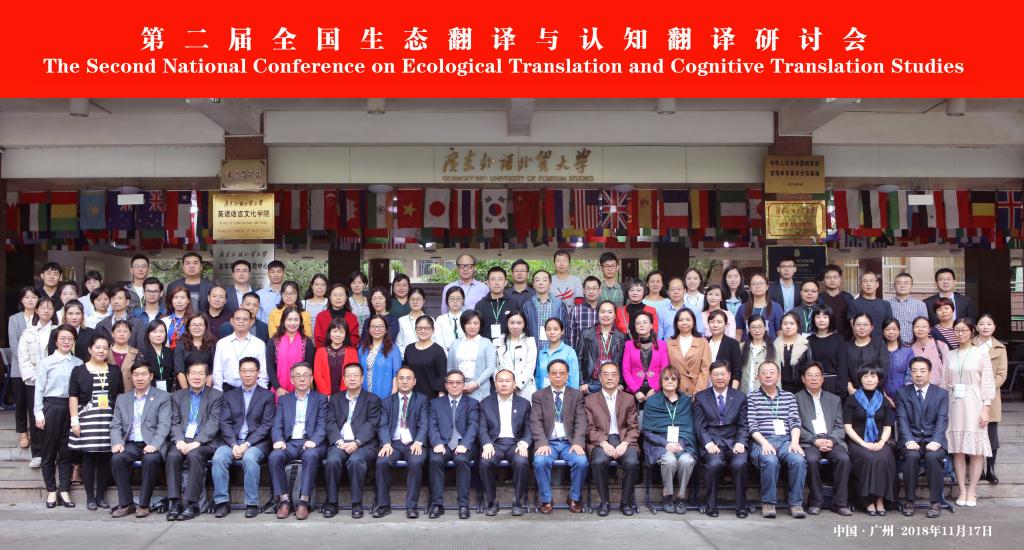
大会合影
通讯:许晓君、任芳芳、李小沛、梁梅花
编辑:周静
生态翻译学正在成为国际翻译学的新兴研究范式,认知翻译学更多地关注翻译的认知加工问题,正在成为翻译学领域的热点领域。中国生态翻译与认知翻译研究会于2017年8月4-6日在贵州师范大学成功举办首届全国生态翻译与认知翻译研讨会暨中国生态翻译与认知翻译研究会成立大会。根据学会章程和议程,决定于2018年11月16-18日在广州举办“第二届全国生态翻译与认知翻译研讨会”。研讨会由中国生态翻译与认知翻译学会及广东外语外贸大学联合主办。
一、会议主题
新时代背景下生态翻译学与认知翻译学的学科体系构建
二、主要议题
1.生态翻译学研究前沿动态
2.认知翻译学研究前沿动态
3. 生态翻译与认知翻译研究的方法论
4. 生态翻译学与认知翻译学的核心概念
5. 生态翻译学与认知翻译学的应用研究
6. 生态翻译学与认知翻译学的话语体系研究
7.生态翻译与认知翻译的评价体系研究
三、会议地点
广东外语外贸大学
相关推荐
★★★★★ 5/5

